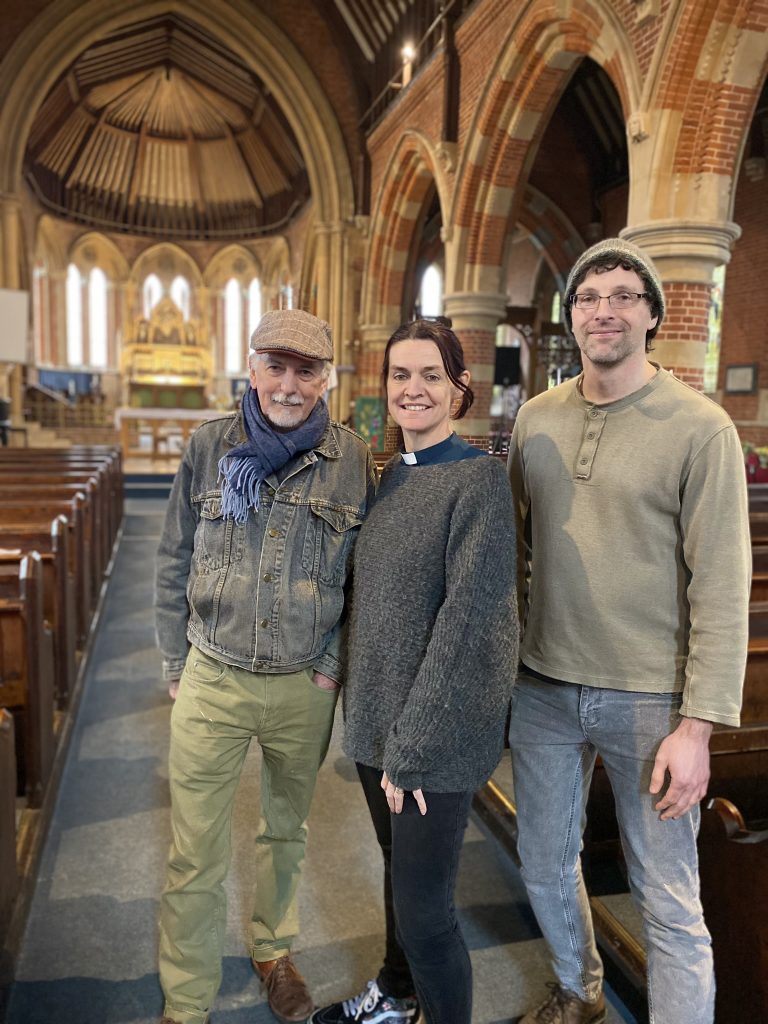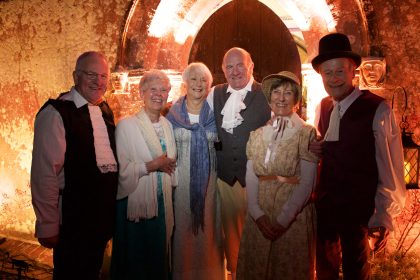The below was originally published on the national church’s website, and can be found here.
Small differences over time have made a huge difference – meaning we can love nature, love people and express our love for God.
Revd Sara Rumble
A busy city church has saved thousands of pounds on its energy bills thanks to making a number of small changes to reduce its carbon footprint and help care for God’s creation.
Over the last year, Priest in Charge Revd Sera Rumble and a team of passionate volunteers at St Deny’s Church, on the edge of the inner city of Southampton, have made subtle changes to reduce the church’s energy consumption and as a result have saved £5,000 off their annual £20,000 utilities bill.
The changes have included switching halogen lightbulbs for LED lighting; replacing kettles for triple-insulated urns; insulating pipes throughout the building; monitoring electricity use through smart meters, buying heated pads for office chairs and installing automatic timers for lights and electric heaters.
St Deny’s Church is housed in a large Victorian building attached to a 1990s church community centre – both are open and used seven days a week from 9am to 10pm serving the local neighbourhood through food projects, free Sunday dinners for the community, local arts and crafts, memory cafes and toddler and parent groups.
The needs of the food projects and hospitality mean there are at least seven fridges and freezers onsite, and commercial ovens and multiple urns that are used heavily (and sometimes left on) – leading to high energy costs, which spurred the church to start tracking its energy consumption and identifying its ‘hidden electricity drinkers.’
Revd Sera and volunteers – mechanical engineer Mike Strickland and historic buildings advisor Frank Green have been at the heart of all the changes, alongside the congregation and community.




Revd Sera explains how they got started: “A lot of us are passionate about the environment and we do care. We had to take out a new electricity tariff and our electricity rates were going to go up huge, so it was an environmental and a financial push – they were the pull factors. And a few passionate people, including Frank, Mike, and other volunteers Dave and Rod, who were willing to make things happen.”
Mike added: “We’re the victims of our own success in a way. It’s the fact we’re serving our community and using our building which has pushed up our energy use. There’s so many reasons as a church as to why we are tackling our energy use and doing our bit to reduce our carbon.
“Loving the local people, loving the planet, loving the people in this world who are struggling with conflict, loving our community and to be able to afford to do this and keep doing it. All of these reasons kind of build on the church’s mission – we’re not just doing this because we are ‘greenies’ (although we probably are!) – but this is part of loving the world out there and loving the world around here.”
Churches march on their cups of tea. A really tangible and simple change you can make as a church is to replace kettles and old urns with triple insulating urns – they will save you energy and money, whilst keeping your staple drinks hotter for longer!

The church’s mission to reduce its carbon footprint supports the Church of England’s ambitious national Net Zero by 2030 programme, which aims to reduce carbon emissions from the energy used in its churches, schools, cathedrals, houses and other buildings, saving money by improving the energy efficiency of buildings, and switching to cheaper, more reliable, renewable energy sources.
St Deny’s Church has been identified as one of 600 churches across England with the highest energy use and will have access to a fully funded Net Zero Carbon Programme energy audit and a small grant to help fund additional green projects.
The church now plans to look at its heating system, insulation and switching to a greener tariff as it sets out on its journey to be Net Zero Carbon.
Revd Sera offers these practical tips on starting an energy-reducing project: “You don’t need a big team to get started and you don’t necessarily need lots of money, as you don’t need to buy into everything. We have learnt to notice the invisible things, like the white appliances. We started monitoring how much electricity they were using and one of the larger chest freezers, which was kindly donated to us, was sadly using the same power as the six other fridge/freezers combined!
“Information, communications and collaboration are crucial and no one can do this by themselves. Look at what makes things hot and what makes things cold in your church. Tackle fridges, freezers, heaters, hot water stuff such as kettles and urns.”
Volunteer Frank, who also sits on the Winchester Diocesan Advisory Committee, said: “Many churches will be thinking they want to reduce their heating energy bills and often that’s a starting point but they don’t know how to go about it. Talk to other churches and begin the conversation and find the first easy step to get going.
“There is a realisation that if we are going to save the planet, then we have to make compromises about how our buildings look, how they function, so that we can actually do the bigger picture.”
Mike added: “Pick something easy which is going to deliver. In my experience once you start on a green project the momentum keeps you going. People become passionate about it and becomes a bit addictive almost! We hope this cause can unite people – it’s so universal. Anyone can agree that our energy bills are reduced by thousands a year, as well as the fact we are caring for our planet.”
Sera added: “Small differences over time have made a huge difference – meaning we can love nature, love people and express our love for God.”

Five Ways to Reduce Energy in Your Church
It might feel overwhelming trying to make changes, especially if you don’t think of yourself as a technical person, but don’t be put off! To help you get started, here are some tips from Revd Sera:
- Make a List: It might help to start by writing down all of the things you own that are using power, and trying to work out which might be costing you the most. Which ones are on all day and night? Which use the most power? (tip: anything that generates heat will almost always be your biggest power user – look out for appliances which are getting unusually warm while running).
- Ask for Help: Can you think of people who might be able to provide some time and advice to help you reviewing your energy use, and spotting and fixing problems? (And then, as you learn more ways to save power, do pass those tips on to others).
- Identify the ‘Easy Wins’: The things that cost little or nothing, and have a quick ‘payback period’. This way, you start saving money more quickly, which will then help you afford the bigger changes further down the line.
- Use Your Power Meter Readings: Especially if you have a smart meter! But even if you don’t, keep a record of your regular daily, weekly, or monthly power use (whatever you have available). If you see a rise in usage, investigate quickly to avoid costly and potentially dangerous faults.
- Be Realistic About Your Situation: Remember that this isn’t ‘one size fits all’. Your power needs and pathway to energy saving will be unique. Some things that are a great idea for one building might not be for another. For instance, normally more loft/roof insulation is a great easy win for a small domestic home with easy access to the loft, and will pay for itself in no time. The same will not be true for a Victorian church with 10-metre high ceilings, where insulating the roof would be a lot more work! So always be open to look at what others are doing and see what you can learn – but don’t assume that because it was a good (or bad) idea from someone else’s perspective it will be the same for you.
Read more about St Deny’s Church and its year of energy reducing projects here.




